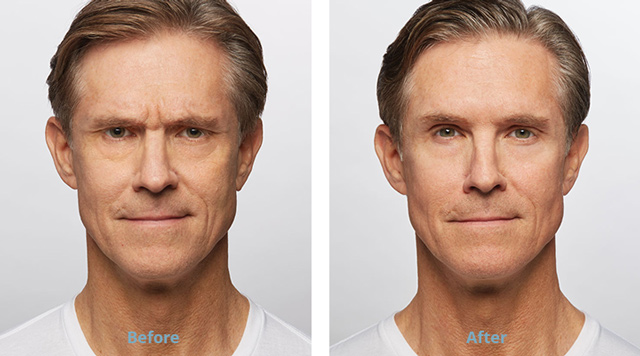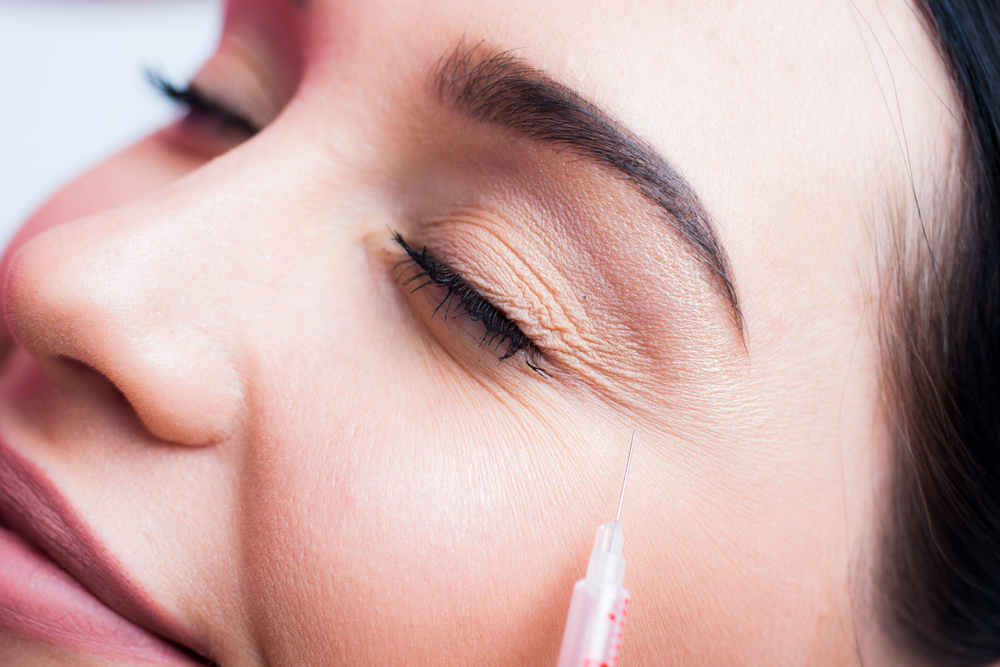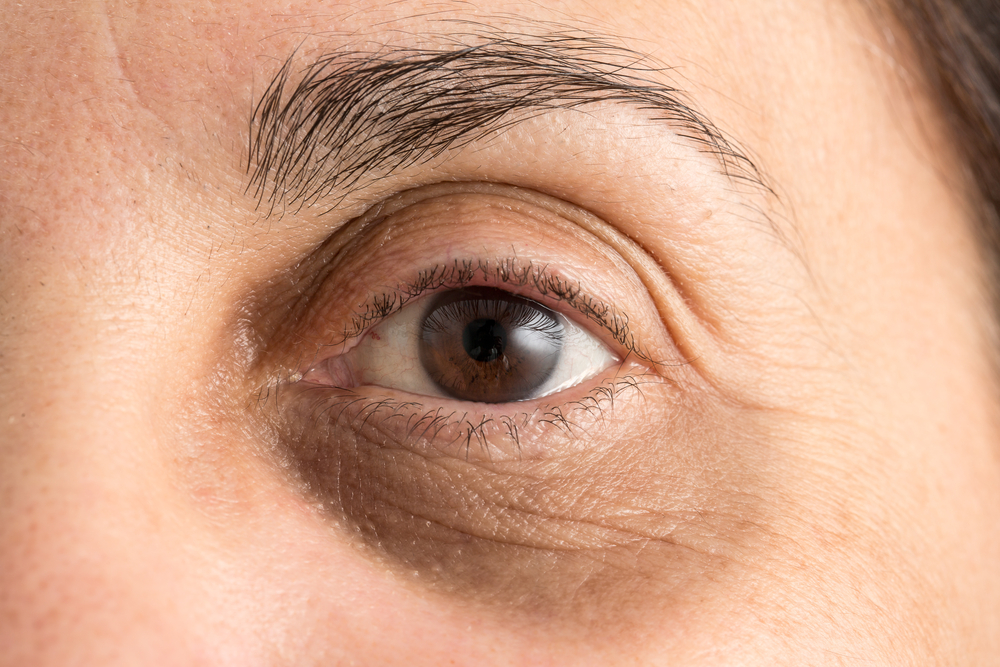Quick facts
About
- Dysport is an injectable anti-wrinkle product.
- It contains botulinum toxin type A, a neurotoxin that temporarily paralyzes facial muscles.
Injection sites
- Dysport is FDA-approved for treating frown lines between the eyebrows.
- It is also used off-label for forehead lines and crow’s feet.
- Side effects are usually mild, and typically include redness and swelling.
- Dysport is considered a safe treatment with low risk of serious side effects.
Results
- Effects last for three to four months.
Cost
- Approximately $4 per unit.
- Treatment for frown lines and forehead each cost $200–$240; crow’s feet, $150–$250.
What Is Dysport?
Dysport is an injectable product that is primarily used in anti-wrinkle treatment, although it is also used to treat certain medical conditions. When used for cosmetic purposes, it works by temporarily paralyzing the targeted facial muscles that cause frown lines.
Dysport is manufactured by global pharmaceutical group Ipsen Pharmaceuticals in Europe and marketed by Medicis Pharmaceutical Corporation in the United States.
The main ingredient in Dysport is botulinum toxin type A, a neurotoxic molecule used in other anti-wrinkle injectables such as Botox and Xeomin. Dysport is the second most popular botulinum toxin product in the United States behind Botox.
Dysport differs from Botox in that Dysport has a slightly faster onset of action and is far more diluted than Botox. However, the two products produce similar results and last for more or less the same length of time.
What Are Dysport Injections Used to Treat?
Cosmetic applications
Dysport first gained U.S. Food and Drug Administration (FDA) approval in 2009 for use in the treatment of moderate to severe glabellar lines (vertical lines that appear between the eyebrows) in adults under 65 years.
It’s also commonly used off-label to reduce the appearance of horizontal forehead lines and crow’s feet. Due to the diluted formula, Dysport is thought to spread more easily than Botox, which can be useful when treating larger areas such as forehead wrinkles or crow’s feet.
Medical applications
Dysport also has a wide range of medical applications and is used in the treatment of:
- Cervical dystonia
- Spasticity in adults
- Lower limb spasticity in children over the age of two
- Hyperhidrosis (excessive sweating)
- Migraines
What to Expect from the Dysport Procedure
Dysport treatments typically take place in your provider’s office. The injection is administered by a cosmetic surgeon, doctor, dermatologist or another specialized provider.
During treatment, your provider will inject Dysport into five sites around your forehead and eyebrows to reduce muscle activity in the underlying muscles.
The procedure typically takes less than 30 minutes.
The injection is considered to be painless, although you may feel a pinch or some pressure during treatment. Your provider may apply a topical anesthetic prior to treatment to help reduce discomfort.
» For more information on similar botulinum toxin type A neurotoxins, read our article Botox vs. Dysport. vs. Xeomin.
How Long Does It Take to See Results?
Dysport has a faster onset time than other botulinum toxin products. As noted in a review published in the Aesthetic Surgery Journal, the median onset for Dysport is between 12 and 72 hours post-injection. Most people see results within two or three days, although it may take up to a month to see the full effects.
You can expect the results to last three to four months, after which you may repeat the procedure if you wish to maintain results. In a randomized, double-blind, placebo-controlled study, researchers found the effects of Dysport lasted for 109 days on average.
Before and Afters


Recovery
There is virtually no recovery time associated with Dysport. After receiving your injection, you may go home immediately and resume your usual day-to-day activities.
You may experience some swelling and redness around the treatment area. These symptoms usually resolve within a few hours. Bruising is also a possibility, although it is relatively uncommon.
As with all cosmetic procedures, it is very important that you follow your provider’s post care instructions very carefully after receiving treatment. Your provider may advise you to avoid lying down for several hours after treatment and to refrain from engaging in strenuous exercise for the rest of the day.
You may also be instructed to avoid massaging or applying pressure to the treated area for several days in order to minimize the risk of toxin migration. Your provider may recommend using Arnica cream (a natural, over-the-counter cream used to treat pain and swelling) to alleviate pain and bruising.
What Are the Common Side Effects of Dysport?
Dysport is generally considered to have a very good safety profile, and many patients are able to achieve great results without experiencing significant side effects. Nevertheless, there are a few potential adverse effects to be aware of.
As noted in a study published in the Aesthetic Surgery Journal, the following side effects affect 2% or more of patients:
- Nasopharyngitis (the common cold)
- Headache
- Nausea
- Upper respiratory tract infection
- Skin reaction near the site of injection
- Swollen eyelid
- Drooping eyelid
- Sinus infection
Most side effects should resolve themselves within a couple of days. If side effects persist or worsen, contact your provider.
Is Dysport safe for pregnant women?
The effects of Dysport on unborn babies are not yet known. If you are pregnant or planning to become pregnant, be sure to address this with your doctor before treatment.
It is also not known if Dysport can be transmitted through breast milk; talk to your provider if you are breastfeeding or planning to breastfeed.
Toxin migration
As with all botulinum toxin products, there’s a small risk that Dysport can migrate or spread from the injection site to other parts of the body. This can cause botulinum toxicity, which may lead to:
- Blurry and/or double vision
- Loss of strength
- Difficulty breathing and swallowing
- Hoarseness
- Difficulty speaking
- Urinary incontinence
The symptoms of toxin migration can occur within hours of treatment or within several weeks. Contact your provider immediately should you experience any of these symptoms.
Reviews
Zwivel polled 1,000 cosmetic patients who had received Dysport injections. 92% of these patients were happy with the cosmetic outcome of their treatment. 5% held neutral views and 3% would not receive Dysport injections again.
How Much Does Dysport Cost?
Dysport costs about $4 per unit which is significantly cheaper than Botox, which costs about $12 per unit. However, due to the Dysport formulation, you would need approximately 2.5 to 3 units of Dysport to obtain the same results as 1 unit of Botox. Consequently, Dysport and Botox tend to be similarly priced.
Exactly how many units you will need depends on the specifications of your treatment, but the following breakdown per treatment area should provide you with an approximate amount:
| Injection Site | Units Required | Price |
|---|---|---|
| Forehead | 50-60 | $200-$240 |
| Crow’s feet | 30-40 | $150-$250 |
| Frown lines | 50-60 | $200-$240 |
Note that these prices can vary significantly depending on your location, and the skill and experience of your provider.
Differences Between Dysport and Botox at a Glance
Neurotoxins
Both products use botulinum toxin type A, but differ slightly as they are manufactured differently. The full name for the neurotoxin used in Dysport is abobotulinumtoxinA, while Botox uses onabotulinumtoxinA.
Treatment areas
Dysport only has FDA approval for treating moderate to severe frown lines between the eyebrows, while Botox has approval for treating frown lines, forehead lines, and crow’s feet.
Onset time
Dysport usually has a faster onset time than Botox. The effects of Dysport can usually be seen within two or three days, while it may take up to a week to see the results of Botox.
Dosing
Compared to Botox, Dysport is much more diluted. The exact ratio is still a topic of discussion, but it is generally accepted that three units of Dysport is equivalent to one unit of Botox.
Cost
At just $4 per unit, Dysport is significantly cheaper than Botox, which is usually priced at approximately $12 per unit. However, since three times more Dysport is required to achieve the same results as Botox, the cost is very similar.
» For more information on the differences, read our article Dysport vs. Botox.
Takeaway
Dysport may not be as well known as Botox, but it has quickly proven itself to be a good option for anyone interested in reducing the appearance of facial wrinkles. Much like Botox, it is commonly used to treat frown lines, horizontal lines on the forehead and crow’s feet, with results typically lasting for about three to four months.
Dysport shares many similarities with Botox in terms of active ingredients, side effects, and cost, but the two products do have their differences. Dysport has a slightly quicker onset than Botox and is formulated differently, which allows the product to spread more easily. Whether or not Dysport is a better choice than Botox largely comes down to which product your provider has more experience with.
Find a Dysport Provider near You
Given the effects and results of Dysport and Botox are very similar, the skill, experience, and professional preferences of a practitioner are far more important than the product used.
If you want to find out which of the two will best suit your needs, talk with our board certified and experienced plastic surgeons.









